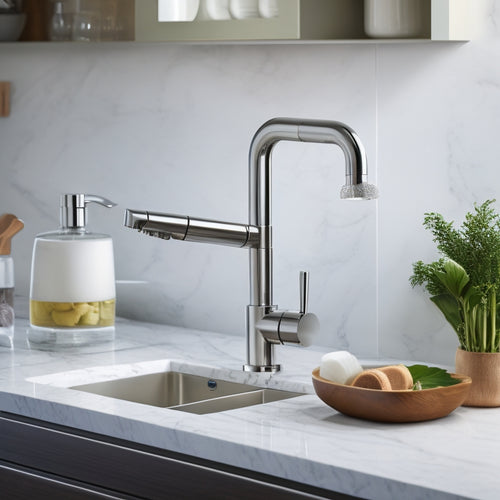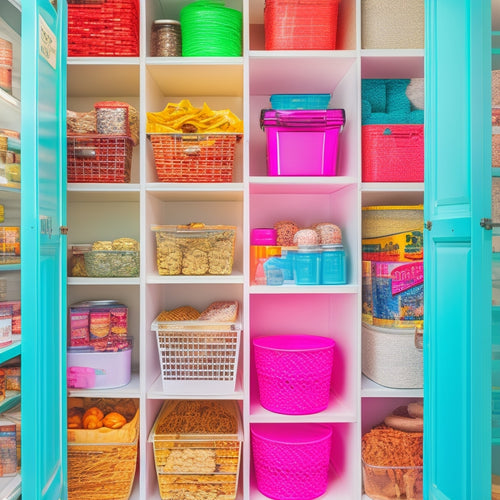
Revolutionize Your Workplace With This Inspection Checklist
Share
A well-structured inspection checklist is the key to revolutionizing your workplace by streamlining inspections, enhancing productivity, and ensuring a safe and efficient work environment. Implementing a structured housekeeping inspection process, automating recurring inspections, and leveraging performance evaluation analytics can lead to significant improvements. By integrating a digital checklist into existing workflows, assigning clear responsibilities, and customizing it to suit specific needs, you can optimize inspection processes, reduce inefficiencies, and enhance compliance. To reveal the full potential of your inspection checklist and transform your workplace, discover how to further refine your approach through strategic implementation and process optimization.
Key Takeaways
• Implement a structured housekeeping inspection process to boost safety, productivity, and efficiency in the workplace.
• Automate recurring inspections to reduce inspection times, enhance data accuracy, and improve compliance.
• Leverage performance evaluation analytics to refine processes, identify opportunities for improvement, and increase employee productivity.
• Establish a clear communication plan for stakeholders to ensure seamless integration of the inspection checklist into existing workflows.
• Access real-time updates with digital checklists to track and address deficiencies, reduce downtime, and maintenance costs.
Streamlining Workplace Inspections
By implementing a structured housekeeping inspection process, facilities can greatly reduce the time and effort spent on inspections, freeing up resources for more critical tasks. This streamlining is made possible through inspection automation, which enables the scheduling of recurring inspections and eliminates manual data entry.
Additionally, streamlined reporting allows for easy tracking and analysis of inspection data, facilitating the identification of trends and areas for improvement. With a digital checklist, facilities can access real-time updates, share reports effortlessly, and leverage performance evaluation analytics to refine their inspection process.
Effective Housekeeping Practices
Effective housekeeping practices are the cornerstone of a well-maintained facility, as they directly impact the safety, productivity, and overall efficiency of the workplace. By implementing cleanliness standards, organizations can greatly reduce health hazards and prevent accidents.
A well-organized workspace also boosts employee morale, enhances visitor confidence, and contributes to a safe and efficient work environment. Additionally, effective housekeeping practices help maintain equipment, reduce waste, and extend the lifespan of machinery.
Checklist Implementation Strategies
A well-planned implementation strategy is essential to make sure that the housekeeping inspection checklist becomes an integral part of the facility's maintenance routine. This involves integrating the checklist into existing workflows, assigning clear responsibilities, and providing staff training to guarantee a smooth switch.
To maximize the checklist's effectiveness, consider checklist customization to suit your facility's specific needs.
Develop a clear communication plan to guarantee that all stakeholders understand the importance of the checklist and their roles in its implementation.
Establish a system for tracking and addressing deficiencies identified during inspections.
Schedule regular review and update sessions to refine the checklist and ensure it remains relevant and effective.
Optimizing Inspection Processes
Facilities can greatly improve their housekeeping inspection processes by streamlining workflows, eliminating inefficiencies, and integrating innovative technologies. This can be achieved through process improvement initiatives that leverage inspection technology to optimize inspection frequencies, routes, and procedures. By automating routine tasks and implementing digital reporting solutions, facilities can reduce inspection times, enhance data accuracy, and improve compliance.
| Inspection Technology | Process Improvement | Benefits |
|---|---|---|
| Mobile apps for data collection | Standardized inspection procedures | Increased efficiency, reduced errors |
| Digital reporting solutions | Automated data analysis | Improved compliance, enhanced decision-making |
| Real-time analytics | Data-driven process optimization | Enhanced safety, reduced risks |
Enhancing Workplace Efficiency
By streamlining housekeeping inspection processes, organizations can access substantial productivity gains and cost savings, ultimately enhancing overall workplace efficiency. This is achieved by implementing a structured approach to inspections, ensuring that all areas are thoroughly examined, and identifying opportunities for improvement. As a result, employee productivity increases, and safety standards are upheld.
-
Reduced downtime and maintenance costs due to proactive identification of potential hazards
-
Improved employee morale and motivation, leading to enhanced overall performance
-
Enhanced compliance with safety standards and regulations, reducing the risk of accidents and fines
Frequently Asked Questions
How Often Should I Update My Housekeeping Inspection Checklist?
Update your housekeeping inspection checklist periodically to reflect Checklist Revisions and adapt to Regulatory Changes, ensuring compliance and effectiveness; consider semi-annual or annual reviews to maintain a robust and relevant inspection process.
Can I Customize the Checklist for My Industry's Specific Needs?
Yes, the housekeeping inspection checklist can be customized to meet specific industry needs through template adaptation, ensuring sector compliance and addressing unique challenges, thereby enhancing its effectiveness in promoting a safe and efficient work environment.
Are Digital Checklists More Effective Than Paper-Based Ones?
Digital checklists surpass paper-based ones in error reduction and data analysis, offering real-time updates, photo documentation, and performance evaluation analytics, thereby enhancing the overall inspection process and promoting a safer work environment.
How Do I Ensure All Staff Members Understand Their Housekeeping Roles?
To guarantee all staff members understand their housekeeping roles, implement clear communication through defined responsibilities, task lists, and regular training. Establish staff accountability by assigning specific duties, tracking progress, and providing constructive feedback to promote a culture of ownership and responsibility.
What Is the Ideal Frequency for Conducting Comprehensive Inspections?
'Conducting thorough inspections at the crossroads of risk assessment and compliance standards is essential. Ideally, frequency should be tailored to the facility's unique needs, with a minimum of quarterly reviews to promote a safety-first culture.'
Related Posts
-

Revolutionize Your Kitchen With Clever Organizers
I've streamlined my kitchen by incorporating clever organizers that have transformed the way I cook and live. By maxi...
-

Revolutionize Your Kitchen Sink With Must-Haves
Elevate your kitchen sink experience with must-have essentials that prioritize organization, efficiency, and style. S...
-

Revamp Your Pantry With Dollar Store Hacks
You can transform your pantry from a cluttered disaster zone to a sleek and functional space with just a few trips to...


